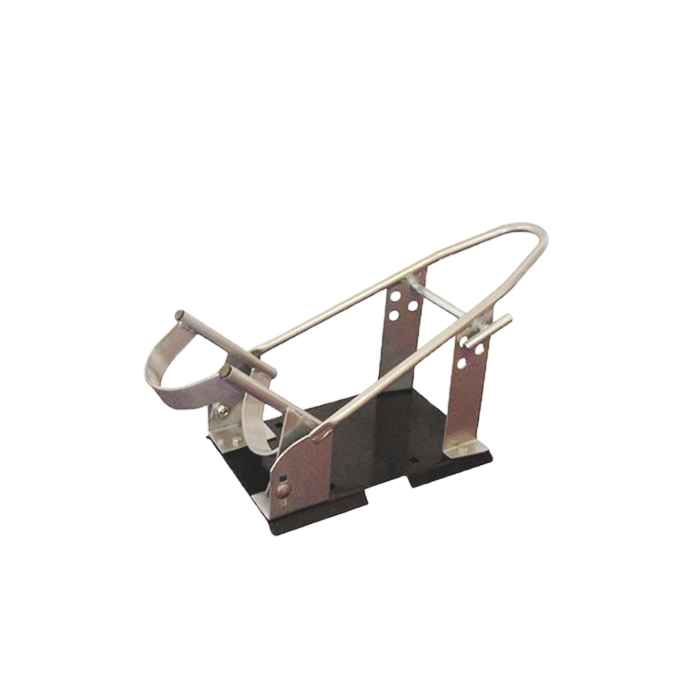How to Adjust Motorcycle Wheel Chocks for Different Tire Sizes?
Adjusting motorcycle wheel chocks for different tire sizes is crucial for ensuring the safety and stability of your bike during transport or storage. The process involves assessing your motorcycle's tire dimensions, selecting an appropriate wheel chock, and making necessary adjustments to accommodate various wheel sizes. Begin by measuring your tire's width, diameter, and circumference. Next, choose a versatile wheel chock that offers adjustable features. Finally, follow the manufacturer's instructions to modify the chock's cradle width, angle, and height. This customization ensures a snug fit for your specific motorcycle, preventing unwanted movement and potential damage during transit or while parked.

Understanding Motorcycle Wheel Chocks and Their Importance
What is a Motorcycle Wheel Chock?
A motorcycle wheel chock is a vital piece of equipment designed to secure and stabilize a motorcycle's front wheel during transport or storage. This device typically consists of a sturdy base and a cradle that holds the wheel in place, preventing the bike from rolling or tipping over. Wheel chocks come in various designs, including adjustable models that can accommodate different tire sizes and styles.
The Role of Wheel Chocks in Motorcycle Safety
Wheel chocks play a crucial role in maintaining the safety of your motorcycle and those around it. By securely holding the front wheel in place, they prevent unexpected movement that could lead to accidents or damage. This is particularly important when transporting motorcycles in trailers or trucks, as well as when storing them for extended periods. A properly adjusted wheel chock ensures that your bike remains upright and stable, even on uneven surfaces or during sudden stops.
Types of Motorcycle Wheel Clamps and Their Features
There are several types of motorcycle wheel clamps available on the market, each with unique features to suit different needs:
- Fixed wheel chocks: These are simple, non-adjustable chocks suitable for specific tire sizes.
- Adjustable wheel chocks: These versatile chocks can be modified to fit various tire sizes and styles.
- Pivoting wheel chocks: These allow for easy loading and unloading of the motorcycle.
- Trailer-mounted wheel chocks: Designed specifically for securing motorcycles during transport.
- Floor-mounted wheel chocks: Ideal for long-term storage in garages or workshops.
Understanding the different types of wheel chocks and their features will help you choose the most suitable option for your specific needs and motorcycle model.
Measuring and Assessing Your Motorcycle's Tire Dimensions
Tools and Techniques for Accurate Tire Measurement
To ensure proper adjustment of your motorcycle wheel chock, it's essential to accurately measure your tire dimensions. You'll need the following tools:
- Tape measure or ruler
- String or flexible measuring tape
- Chalk or marker
- Notepad and pen
To measure your tire, follow these steps:
- Measure the tire width at its widest point.
- Determine the tire diameter by measuring from one edge of the rim to the opposite edge, passing through the center.
- Calculate the tire circumference by wrapping a string around the tire's center and marking where it overlaps. Then, measure the length of the string between the marks.
Understanding Tire Size Nomenclature
Motorcycle tire sizes are typically expressed using a standardized format. For example, a tire size of 120/70-17 indicates:
- 120: The tire width in millimeters
- 70: The aspect ratio (height of the sidewall as a percentage of the width)
- 17: The rim diameter in inches
Familiarizing yourself with this nomenclature will help you communicate your tire size effectively when selecting or adjusting a wheel chock or motorcycle wheel clamp.
Common Motorcycle Tire Sizes and Their Impact on Chock Selection
Different motorcycle types often have distinct tire sizes, which can impact your choice of wheel chock:
- Sport bikes: Typically have narrower front tires, ranging from 110mm to 130mm in width.
- Cruisers: Often feature wider front tires, usually between 130mm and 150mm.
- Adventure bikes: May have larger diameter tires with widths similar to sport bikes.
- Touring motorcycles: Generally have wider tires, sometimes exceeding 150mm in width.
Consider these variations when selecting an adjustable wheel chock to ensure it can accommodate your specific motorcycle tire size.
Step-by-Step Guide to Adjusting Motorcycle Wheel Chocks
Preparing Your Workspace and Gathering Necessary Tools
Before adjusting your motorcycle wheel chock, ensure you have a clean, well-lit workspace and the following tools:
- Adjustable wrench
- Screwdriver set
- Allen wrench set
- Lubricant spray
- Safety gloves
Clear the area around the wheel chock to allow for easy maneuvering of your motorcycle.
Adjusting the Wheel Chock's Width, Angle, and Height
Follow these steps to adjust your motorcycle wheel chock for different tire sizes:
Width adjustment:
- Locate the width adjustment mechanism on your wheel chock.
- Loosen the bolts or pins that secure the adjustable parts.
- Slide the cradle arms to match your tire's width.
- Ensure the tire fits snugly between the arms without excessive pressure.
- Retighten the bolts or reinsert the pins to secure the new width.
Angle adjustment:
- Identify the angle adjustment feature on your wheel chock.
- Loosen the locking mechanism that allows for angle changes.
- Adjust the cradle angle to match your tire's profile.
- Ensure the tire makes even contact with the chock's surface.
- Tighten the locking mechanism to secure the new angle.
Height adjustment:
- Locate the height adjustment mechanism, if available.
- Loosen any fasteners that allow for vertical movement.
- Raise or lower the chock to accommodate your tire's diameter.
- Ensure the tire sits properly in the cradle without lifting the rear wheel.
- Secure all fasteners to lock in the new height.
Testing and Fine-Tuning the Adjusted Wheel Chock
After making adjustments, it's crucial to test the wheel chock's effectiveness:
- Slowly roll your motorcycle into the adjusted chock.
- Observe how the tire settles into the cradle.
- Check for any wobbling or instability.
- Ensure the motorcycle remains upright without support.
- Make minor adjustments as needed for a perfect fit.
- Test the chock multiple times to confirm its reliability.
Remember to periodically inspect and readjust your wheel chock, especially when switching between different motorcycles or after long periods of use.
Conclusion
Mastering the art of adjusting motorcycle wheel chocks for different tire sizes is essential for every rider who values safety and convenience. By understanding the importance of wheel chocks, accurately measuring your tire dimensions, and following a step-by-step adjustment process, you can ensure your motorcycle remains secure during transport and storage. Remember that proper adjustment not only protects your bike but also enhances your peace of mind. Regular maintenance and inspection of your wheel chock will guarantee its continued effectiveness, allowing you to focus on the joy of riding rather than worrying about your motorcycle's stability.
Contact Us
For more information about high-quality motorcycle wheel chocks and other motorcycle maintenance tools, please contact RUNVA ENTERPRISES LIMITED at info@runva.com.cn. Our team of experts is ready to assist you in finding the perfect solution for your motorcycle security needs.
References
Johnson, M. (2022). The Complete Guide to Motorcycle Wheel Chocks. Rider's Digest.
Smith, A. (2021). Understanding Motorcycle Tire Sizes and Their Impact on Performance. Moto Mechanics Monthly.
Brown, R. (2023). Adjustable Wheel Chocks: A Comprehensive Review. Biker's Toolbox.
Davis, L. (2020). Safety First: The Importance of Proper Motorcycle Securing Techniques. Ride Safe Magazine.
Thompson, K. (2022). Motorcycle Transport Essentials: From Wheel Chocks to Tie-Downs. Two-Wheel Transport Today.
Wilson, G. (2023). DIY Motorcycle Maintenance: Adjusting and Customizing Your Gear. Garage Guru Quarterly.

_1737625693698.webp)

